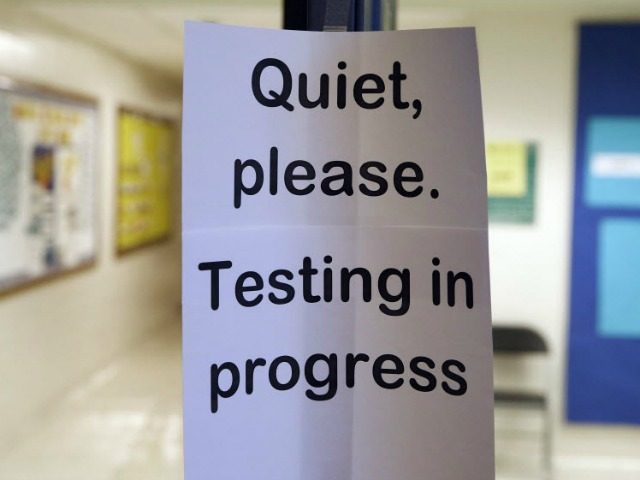About 37 percent of U.S. 12th-graders are prepared for college-level coursework in mathematics and in reading, according to the 2015 results of the National Assessment of Educational Progress (NAEP). That’s down from the last assessments.
In 2013, an estimated 39 percent of high school seniors had the skills needed for entry-level college math courses, and an estimated 38 percent had the skills for college-level reading.
NAEP results, also known as The Nation’s Report Card, are measured at three achievement levels: Basic, Proficient and Advanced. Only 25 percent of U.S. 12th graders were found to be at or above the Proficient level in mathematics, including 3 percent who scored at the Advanced level in 2015. Only 37 percent were at or above the Proficient level in reading, including 6 percent who scored at the Advanced level.
The percentage of students performing at or above the Basic level in mathematics in 2015 was lower compared to the data from 2013, but a higher percentage of students performed below Basic. In reading, the percentage of seniors performing below Basic in 2015 was also higher compared with 2013.
The national average mathematics score in 2015 for twelfth-grade students was lower than in 2013, and the average reading score was not significantly different.
When race is a factor for the mathematics assessment, 47 percent of Asian students, 32 percent of white students and 31 percent of students of two or more races scored at or above the Proficient level, while 7 percent of black, 10 percent of American Indian/Alaska Native and 12 percent of Hispanic students scored at or above Proficient in 2015.
In reading, 49 percent of Asian students, 46 percent of white students and 45 percent of students of two or more races scored at or above the Proficient level, while 17 percent of black students, 25 percent of Hispanic students and 28 percent of American Indian/Alaska Native students attained that level in 2015.
No significant differences were found for any racial/ethnic group compared to 2013 test results.
“A strong foundation in math and reading is essential to a student being prepared for college academics and for most careers, so this trend of stagnating scores is worrisome,” NAEP governing board chair Terry Mazany said. “We must examine how we’re preparing students for life after high school, whether offering more students advanced math coursework, for example, or placing greater emphasis on reading for pleasure and for school.”
Last October, NAEP results found that – for the first time since the early 1990s – math scores of fourth and eighth graders dropped. In addition, eighth grade reading scores declined, while those of fourth graders remained flat.
These data were especially significant because most of the fourth and eighth grade students administered the biennial assessments live in states that have implemented the Common Core math and English Language Arts standards that by now were supposed to have begun to improve student skills in these core areas and shrink the achievement gap between white and minority students.
NAEP measures student achievement in a variety of subjects and is a congressionally authorized project of the National Center for Education Statistics (NCES) within the U.S. Department of Education.


COMMENTS
Please let us know if you're having issues with commenting.